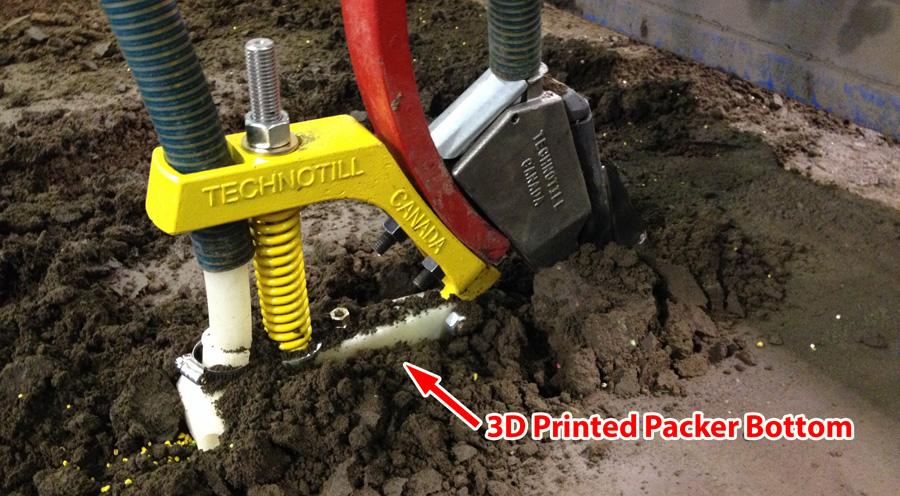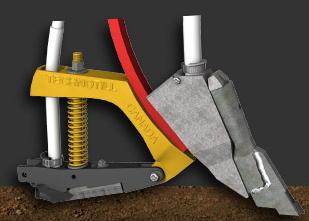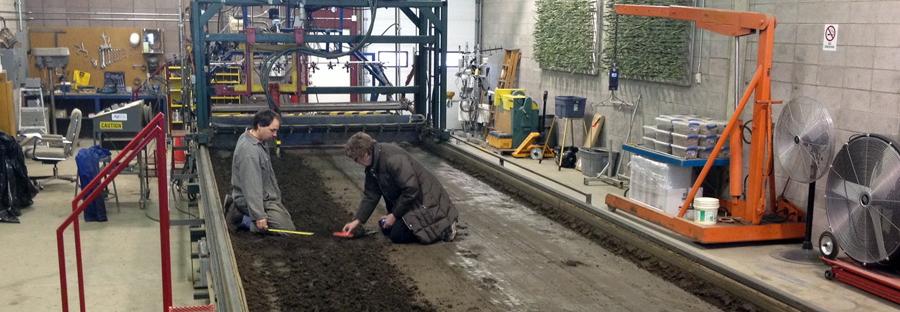 In a groundbreaking move – literally – a Lethbridge, Alberta, Canada-based company has produced 3D printed parts to help test a high-tech crop seeding system.
In a groundbreaking move – literally – a Lethbridge, Alberta, Canada-based company has produced 3D printed parts to help test a high-tech crop seeding system.
Framework Animation Ltd. say they were asked to build a digital 3D model of the ‘packer’ component of the Technotill Seeding System and to then build a physical, 3D printed model of it for testing purposes.
 While the actual packer part is ultimately made from cast iron and carbide for the purposes of extended durability and strength, creating one-off parts of the metal packer for R&D activities is very expensive — thousands of dollars in fact — and the process requires several weeks’ time to complete each iteration.
While the actual packer part is ultimately made from cast iron and carbide for the purposes of extended durability and strength, creating one-off parts of the metal packer for R&D activities is very expensive — thousands of dollars in fact — and the process requires several weeks’ time to complete each iteration.
A seeding tool consists of a narrow opener with a seed tube attached to the front of a C-shank, and a precision packer bolted behind each shank, and it’s used when seeding cereals, oil seeds, pulses, and grasses. Blends of fertilizer can be placed with the seed and, after the seed row is packed, additional nitrogen can be sidebanded away from the seed.
Technotill and Framework Animation say the cost of building the parts for testing was slashed to hundreds of dollars, and the turnaround time reduced to days, using the 3D printed model.
According to Jason Knott of Framework Animation Ltd., the part was attached to the shank of a simulated crop seeder and run through the soil bin at the Agricultural Technology Centre in Lethbridge for testing. It was run through the dirt under controlled and monitored conditions at various speeds, and after each run, the resulting seed and fertilizer placement was examined.
“No one knew for certain if the 3D printed part would hold up to the physical pressures involved in testing,” says Betty Schoenhofer of Technotill. “We all had our fingers crossed. I could not be happier about how the part worked in the soil bin. Using a 3D printer certainly reduces the limitations that are part of design and redesign in our company.”
Knott says the data collected from testing will be analyzed, and if further refinements to any part of the packer are warranted, he’ll incorporate them into the existing digital model, reprint them, and get underway re-testing the system in as little as a week’s time.
“I’m thrilled to bring 3D Printing to Lethbridge. The way it allows companies to increase the pace of their R&D — while reducing their costs — that’s pretty exciting stuff,” Knott says.
What do you think of this use of 3D printing to test parts which undergo the enormous stresses involved in processes like planting seeds? Let us know in the 3D Printed Groundbreaking forum thread on 3DPB.com.
Subscribe to Our Email Newsletter
Stay up-to-date on all the latest news from the 3D printing industry and receive information and offers from third party vendors.
You May Also Like
Precision at the Microscale: UK Researchers Advance Medical Devices with BMF’s 3D Printing Tech
University of Nottingham researchers are using Boston Micro Fabrication‘s (BMF) 3D printing technology to develop medical devices that improve compatibility with human tissue. Funded by a UK grant, this project...
3D Printing Webinar and Event Roundup: April 21, 2024
It’s another busy week of webinars and events, starting with Hannover Messe in Germany and continuing with Metalcasting Congress, Chinaplas, TechBlick’s Innovation Festival, and more. Stratasys continues its advanced training...
3D Printing Webinar and Event Roundup: March 17, 2024
It’s another busy week of webinars and events, including SALMED 2024 and AM Forum in Berlin. Stratasys continues its in-person training and is offering two webinars, ASTM is holding a...
3D Printed Micro Antenna is 15% Smaller and 6X Lighter
Horizon Microtechnologies has achieved success in creating a high-frequency D-Band horn antenna through micro 3D printing. However, this achievement did not rely solely on 3D printing; it involved a combination...






























